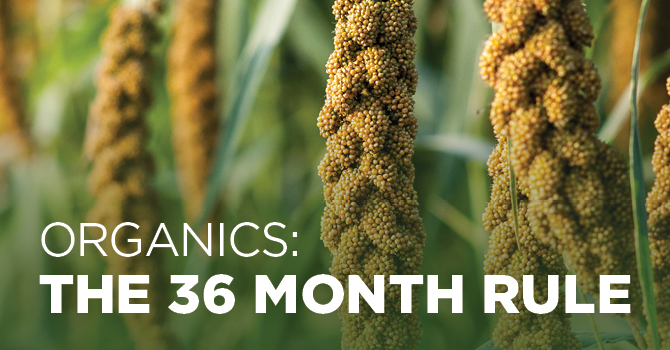Organics: The 36 Month Rule
Posted by Dani Kusner, Organic Agronomy Advisor on October 24, 2017


Dani Kusner has worked in biological and organic farming systems since graduating from the University of Dayton with a Bachelor of Science in sustainability studies. She worked at the Rodale Institute and consulted with growers in both Canada and the United States. Dani worked for The Andersons from 2016-2021 and is still an active advocate and resource for organic growers.
Fall Fertilizer and Organics
As harvest is upon us, I’ve spoken to several large acreage farmers who are considering beginning the transition to organic this fall. While conventional harvest numbers in the Midwest are coming in better than expected for most, these farmers are already thinking ahead to next year, including fall fertility applications, crop rotation, and questioning organics.
For row crop farmers who are considering transitioning to organic, it is at this time of the year, perhaps more than any other time, to seriously think about this important question: “Will I apply a prohibited substance this fall?”
Timing Matters – the 36 Month Rule
The answer to the question, “What was the application date of your last prohibited substance?” directly impacts whether a farmer will begin to receive organic premiums for the 2020 harvest, or if they will have to wait until the 2021 harvest.
The conventional farmers who call The Andersons asking about organics are savvy businessmen and women with a well thought out strategy. Thus far, their last spray of a prohibited substance was an herbicide application sometime this past June or July, which will make any crops harvested after June or July 2020 eligible for organic certification. Their 2018 and 2019 crops can be sold for non-GMO or “transitional” premiums, and their 2020 crop will be able to be sold as “certified organic” since it will be harvested after June or July. This is guaranteed upon approval from an organic certification agency, indicating that the farmer has successfully completed an Organic System Plan (OSP) and fulfilled the National Organic Program (NOP) requirements.
Importance of Harvest Date
The date of organic eligibility will be later if a prohibited substance is applied post-harvest. For example, if a farmer uses anhydrous ammonia or non-organic lime this fall, the farmer cannot achieve organic certification until 36 months from the date of that application. So, if a farmer harvests corn at the end of October, and uses a prohibited substance sometime in November, say November 10, then that field will not be eligible for certification until November 10, 2020. If in 2020, the harvest has occurred prior to November 10th, then the crop cannot be labeled as “certified organic.” All crops harvested after November 10th can be certified and receive organic premiums, but none that are harvested prior to this date.
First and Second Crops Transitional; Third Crop Organic
It is important to time the date of your last prohibited substance so you are only out two years of cash crops farmed organically during the transition period, and that you receive your premiums for the third year’s crop. So, word to the wise, if you are still on the fence about making the transition to organics, be careful about what you apply to your fields this fall! You can always change your mind over the winter, and decide to continue farming conventionally, but you cannot work backwards to reverse a prohibited substance, and you would not want to delay receiving organic premiums until 2021 if you can avoid it.
Wishing you a safe and successful harvest!
FOR MORE INFORMATION:
Please complete the form, and we’ll get you in touch with your Territory Manager from The Andersons.
For more information about The Andersons' Organic Program, visit AndersonsOrganics.com.

